Download Pdf [4,89 MB] - MTU Aero Engines
Download Pdf [4,89 MB] - MTU Aero Engines
Download Pdf [4,89 MB] - MTU Aero Engines
Create successful ePaper yourself
Turn your PDF publications into a flip-book with our unique Google optimized e-Paper software.
Anecdotes<br />
<strong>Engines</strong> morphed into<br />
fire extinguishers<br />
The turbo extinguisher of the fire brigade of<br />
Ludwigshafen-based BASF Aktiengesellschaft<br />
has a pair of Alpha Jet engines producing<br />
water vapor that completely removes<br />
the soluble ammonia gas from the atmosphere.<br />
Moreover, it is only under the protection<br />
of the artificial drizzle that the task force<br />
34 REPORT<br />
By Andreas Park<br />
Worms Rhine Harbor: During the unloading of a chemical tanker, large amounts of ammonia<br />
gas escape. Soon, an ammonia cloud forms and drifts towards the city. Luckily, Germany’s<br />
most powerful fire truck, the “turbo extinguisher” operated by BASF’s fire department, quickly<br />
arrives on the scene. Forming the heart of the truck are twin Alpha Jet Larzac04 engines.<br />
can go near the tanker to fix the leak. This<br />
would have been impossible using conventional<br />
fire fighting equipment, no other system<br />
providing such formidable dousing<br />
power. The truck can tackle 3,500 square<br />
meters of fire site at once. With their exhaust<br />
jet, its engines atomize huge volumes of<br />
water and catapult a bank of fog up to 140<br />
meters wide directly into the seat of fire.<br />
Actually, the working principle of the turbo<br />
extinguisher is as simple as it is brilliant:<br />
<strong>Aero</strong> engines, contrary to their original purpose,<br />
are mounted on a truck. On the latest<br />
generation of the BASF turbo extinguishers,<br />
the turbo extinguisher II, variable water nozzles<br />
are used to feed up to 8,000 liters a<br />
minute of water or water-foam mix into the<br />
exhaust jet of the Alpha Jet engines. The<br />
resulting fog extinguishes fires as far away<br />
as 150 meters, removes or dilutes harmful<br />
gases from the air and is alternatively used<br />
also for cooling industrial equipment. The<br />
versatile extinguishing system delivers<br />
unequalled effectivity. The truck, for instance,<br />
takes a mere minute to douse liquid<br />
fires spreading over an area of 300 square<br />
meters. Amazingly, it is the only vehicle of its<br />
kind in Germany. “Actually, the idea isn’t new<br />
at all, we merely improved on it a lot,” explains<br />
Rolf Haselhorst, who heads the BASF<br />
fire department.<br />
The system was originally developed in the<br />
former Soviet Union, where armored vehicles<br />
were fitted with a MiG engine and deployed<br />
not only for fire fighting but even for plowing<br />
snow. It was when Hungarian turbo extinguishers<br />
in the aftermath of the first Gulf War<br />
were successfully used to fight burning oil<br />
wells in Kuwait that the system attracted<br />
worldwide attention. It still failed to catch on,<br />
however, because for commercial use, the<br />
MiG engines used at the time were too<br />
heavy, sluggish, damage-prone and expensive<br />
in fuel consumption and maintenance.<br />
“We were nevertheless convinced of the<br />
potential and usefulness of the engine-powered<br />
extinguishers,” says Haselhorst and<br />
goes on to explain: “That’s why starting in<br />
the mid-nineties we took to analyzing various<br />
engines, looking for a suitable solution.” In<br />
its effort, the BASF fire brigade was sponsored<br />
by the Federal Ministry of Education<br />
and Research. Successfully so, because by<br />
1998 the first truck was operational.<br />
But rather than using one big engine, the<br />
engineers opted for a pair of the smaller but<br />
capable and robust Larzac04 engine designed<br />
for the Alpha Jet. The two-shaft turbofan<br />
engine was manufactured, beginning<br />
in 1975, by <strong>MTU</strong> <strong>Aero</strong> <strong>Engines</strong> in concert<br />
with Snecma (SAFRAN Group), Turbomeca<br />
Second generation BASF turbo extinguisher<br />
<strong>Engines</strong>: 2 Larzac04-C6<br />
Thrust: 13,100 N<br />
Fuel consumption: 1,000 l/h<br />
Swivel range: +/- 90° horizontally,<br />
+ 45°/- 10° vertically<br />
Fuel tank capacity: 3,000 l<br />
and KHD. <strong>MTU</strong>’s manufacturing and support<br />
stake included notably the engine’s hot section<br />
from the combustor inlet to the turbine<br />
exit. Until the Alpha Jet was retired in 1997,<br />
engines had been built to equip over 500 of<br />
the fighter/trainer aircraft. After that, <strong>MTU</strong><br />
has only been supplying spare parts for the<br />
engine. “Luckily we bought a dozen Alpha Jet<br />
engines at the time,” Haselhorst says, “even<br />
if that means a lot of hassle and strict security<br />
constraints, considering the engines are<br />
coming under the War Weapons Control<br />
Act.” In 2005, BASF had already commissioned<br />
the second, upgraded turbo extinguisher<br />
and appreciably expanded its usage<br />
spectrum. The system is suitable also for<br />
tunnel venting, having successfully been<br />
tested for tunnel lengths up to 1,000 meters.<br />
It enables the helpers to safely approach the<br />
scene of accident. It has engendered growing<br />
interest among operators of industrial<br />
facilities and tunnel operating companies.<br />
For additional information, contact<br />
Sabine Biesenberger<br />
+49 <strong>89</strong> 14<strong>89</strong>-2760<br />
Further information is available on the<br />
Internet at: www.mtu.de/report<br />
Supplying the turbo extinguisher with water is a challenge, standard street hydrants failing to supply the<br />
enormous amounts of water needed. Use is therefore made of special tank trucks.<br />
REPORT 35


![Download Pdf [4,89 MB] - MTU Aero Engines](https://img.yumpu.com/5322947/18/500x640/download-pdf-489-mb-mtu-aero-engines.jpg)


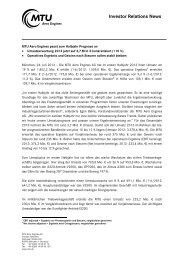
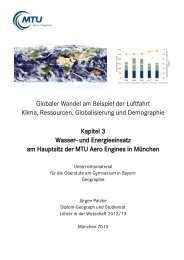
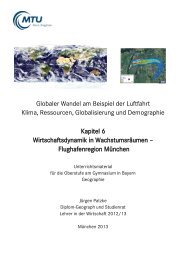
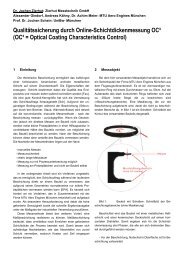
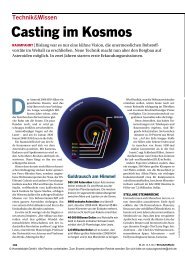

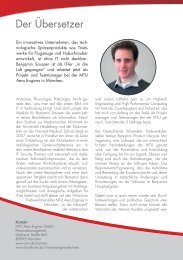
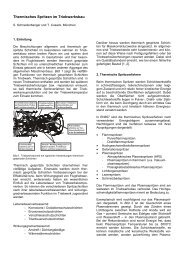
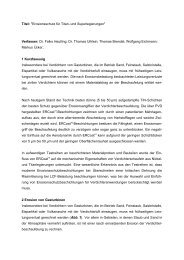


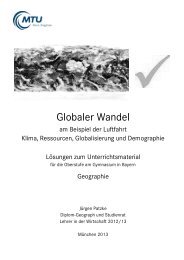
![Download PDF [5,37 MB] - MTU Aero Engines](https://img.yumpu.com/21945461/1/190x125/download-pdf-537-mb-mtu-aero-engines.jpg?quality=85)